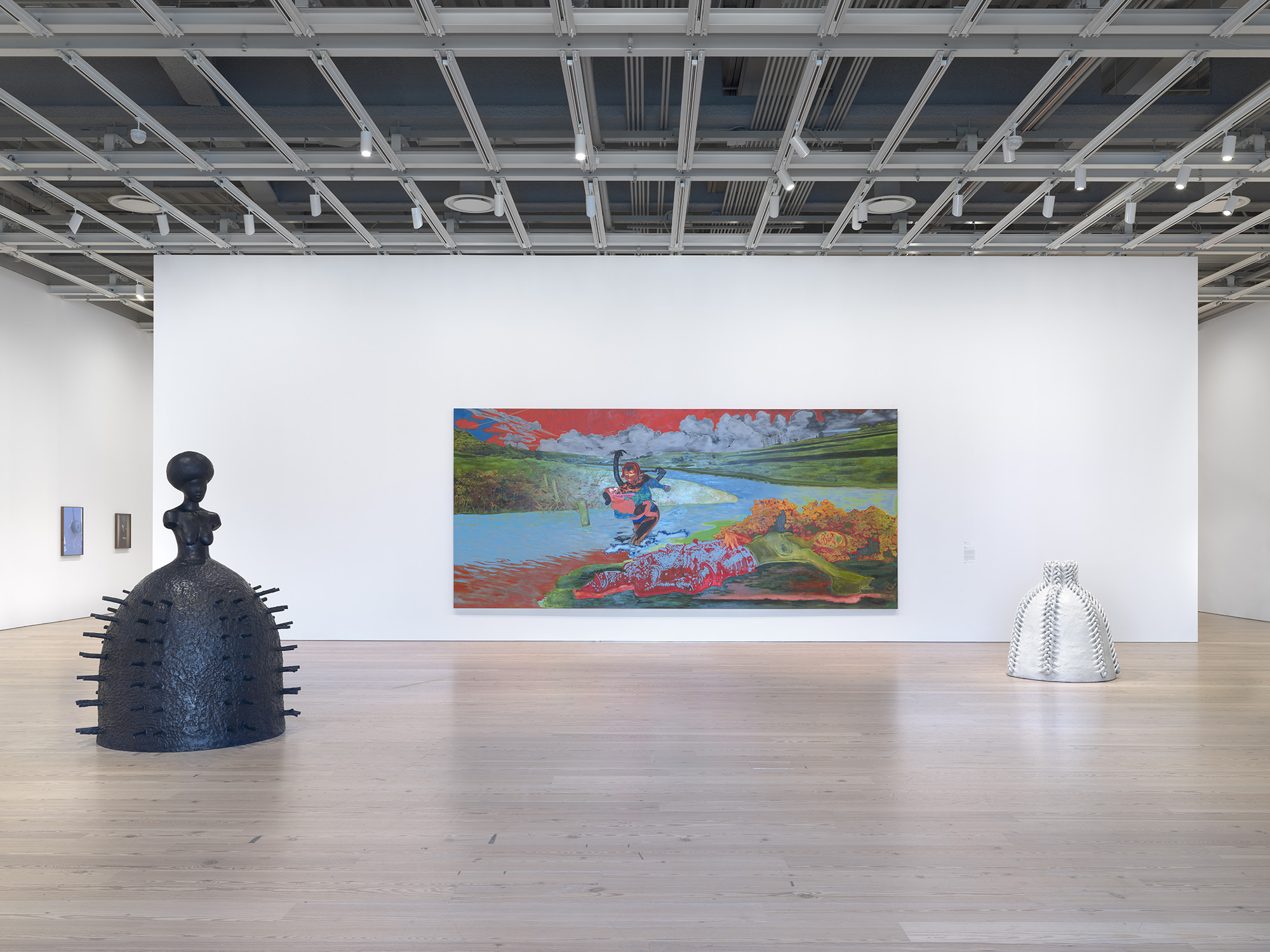Shows
Whitney Biennial 2019


In a cacophonous time of sociopolitical reckoning in America, this year’s Whitney Biennial quietly reflected a cultural shift that’s been a long time coming. Co-curated by Jane Panetta and Rujeko Hockley, the 79th installment of “a snapshot of art in the United States” actually mirrored the country’s projected demographic future: around half of the 75 artists identify as women, and a majority are artists of color.

Racial justice was at the forefront of the exhibition. Museum-goers stepping off the elevators at the fifth floor could hear the faint strings of “The Star-Spangled Banner” emanating from Kota Ezawa’s National Anthem (2018). Projected onto the wall, an animated video pans across watercolors of NFL players kneeling. A close-up on a painting of Colin Kaepernick, sporting his unmistakable afro and San Francisco 49er jersey, acknowledges the prominent role of the former quarterback in protesting police brutality, in solidarity with the Black Lives Matter movement, by kneeling during the national anthem, which white, right-wing pundits framed as “disrespectful.” Alexandra Bell’s display of newspapers, “No Humans Involved: After Sylvia Wynter” (2019), revisits the New York Daily News’ coverage of the 1989 Central Park Five case, in which five black teenagers were wrongly convicted of raping a white female jogger. The headlines splashed across the 20 pages, with photographs redacted by Bell, reveal how they were repeatedly dehumanized by the media, characterized as a “wolf pack” out “wilding.” Bell is best-known for her project “Counternarratives” (2017), which edits pages of the New York Times—the same paper in which the current president of the United States took out a full-page ad 30 years ago calling for the death of the five boys.

Artists did not need to name the sitting president in order to criticize his administration’s policies. A wooden fence that runs the entire length of Pat Phillips’s floor-to-ceiling mural Untitled (Don’t Tread on Me) (2019) brings to mind the US-Mexico border wall. On the other side of the fence, the imagery of brown hands hammering a flag emblematic of the American Revolution illustrates the labor that built the country—from that of Black slaves to undocumented immigrants. Visible through the fence’s slats, the mural’s depiction of a canister labeled “riot control” references tear-gas used on migrants attempting to cross the border—a point of contention within the museum itself, whose vice-chair of the board, Warren
B. Kanders, owns tear-gas manufacturer Safariland. Directly addressing the controversy, Forensic Architecture and Praxis Films’ video Triple-Chaser (2019) details the development of methods to specifically detect Safariland’s tear gas munitions.
Institutional critiques reached beyond the Whitney. Christine Sun Kim’s charcoal drawings express her frustrations as a deaf artist encountering ableism in everyday and professional settings. She quantifies her rage, translating it visually into angles. In Degrees of My Deaf Rage in the Art World (2018), the “Guggenheim accessibility manager” inspires “acute rage” while “museums with zero deaf programming” receive 360-degree “full on rage.” The desire to find a symbolic language for emotions can also be seen in Maia Ruth Lee’s Labyrinth (2019), in which she transforms salvaged scrap metal into “steel glyphs.” A printed glossary accompanies the decorative embellishments mounted on the wall, denoting everything from fear and anger to jealousy and sorrow.
A yearning to memorialize or recover what has been lost preoccupies many of the artists. Gala Porras-Kim recalls La Mojarra Stela 1, a stone carved with an indecipherable Indigenous language discovered in Mexico, through her works on paper and plexiglass. In “Heritage Studies” (2016–19), Iman Issa likewise reimagines historical objects, such as a compass or obelisk, in sleek minimalist designs, thus allowing them to exist outside of archaeological practices that relegate non-Western cultures to the past. The existential threat of environmental catastrophe to entire communities also loomed large. Korakrit Arunanondchai’s spiritually-minded film With history in a room filled with people with funny names 4 (2017) intercuts scenes of the artist’s grandmother at home and in her garden with video of endangered animals, mass protests and mythological imagery. Bridging civilization and the natural world, the narration ends with a simple question: “But what is a species?”
A survey exhibition of this scale, and at this large of an institution, may never truly represent radical change. But asking questions and confronting reality, as this Biennial seemed intent on doing, certainly felt like a start.
Mimi Wong is a New York desk editor of ArtAsiaPacific.
The Whitney Biennial is on view at the Whitney Museum of American Art, New York, until September 22, 2019.
To read more of ArtAsiaPacific’s articles, visit our Digital Library.







